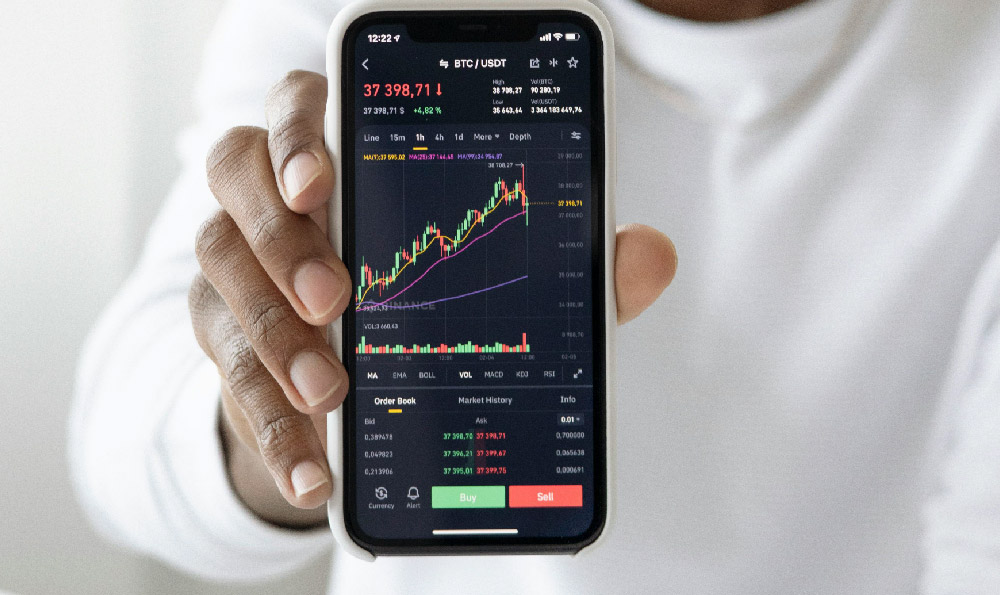Investing $2 million requires a thoughtful and strategic approach that considers your individual risk tolerance, financial goals, and investment timeline. It's not about chasing quick wins but building a diversified portfolio for long-term growth and stability. Given the dynamic nature of the cryptocurrency market, incorporating it into this portfolio demands both vigilance and a solid understanding of the underlying principles.
Before diving into specific cryptocurrencies, it's crucial to acknowledge the broader asset allocation strategy. While I'll address the crypto component, a balanced portfolio typically includes a mix of stocks, bonds, real estate, and potentially alternative investments like private equity or venture capital, depending on your appetite for risk and illiquidity. A substantial portion of your $2 million should remain in these more traditional asset classes, providing a stable foundation for your portfolio.
Now, let's delve into the cryptocurrency aspect. Allocating a portion of your funds to crypto requires a level of sophistication beyond simply buying Bitcoin or Ethereum and hoping for the best. It necessitates a nuanced understanding of different crypto projects, their underlying technologies, and the potential risks associated with each.

First, the cornerstone of any crypto portfolio should be Bitcoin (BTC). As the first and most established cryptocurrency, Bitcoin benefits from the network effect, a proven track record, and increasing institutional adoption. While its growth potential may be less explosive compared to smaller altcoins, it offers a degree of relative stability and serves as a hedge against inflation and traditional financial instability. Allocating a significant percentage of your crypto investment to Bitcoin, perhaps around 40-50%, is a prudent starting point.
Next, Ethereum (ETH) deserves serious consideration. As the leading platform for decentralized applications (dApps) and smart contracts, Ethereum powers a vast ecosystem of projects, including decentralized finance (DeFi) protocols and non-fungible tokens (NFTs). The ongoing transition to Ethereum 2.0, with its proof-of-stake consensus mechanism, promises to improve scalability and reduce energy consumption, further solidifying Ethereum's position as a core component of the crypto landscape. An allocation of around 20-30% to Ethereum would be justifiable.
Beyond Bitcoin and Ethereum, the landscape becomes more speculative and requires careful due diligence. Investing in smaller altcoins can offer the potential for higher returns but also carries significantly greater risk. It's crucial to research thoroughly each project, understanding its technology, its team, its market potential, and its competitive landscape. Look for projects that address real-world problems, have strong development communities, and demonstrate a clear path to adoption.
When considering altcoins, diversification is key. Instead of placing all your eggs in one basket, spread your investments across a variety of promising projects. Focus on sectors that are poised for growth, such as DeFi, Web3, and Metaverse-related technologies. However, be prepared for volatility and understand that many altcoins will ultimately fail. Only allocate a small percentage of your crypto portfolio to these more speculative investments, perhaps around 20-30% in total, spread across several projects.
Within the DeFi space, explore established protocols that offer lending, borrowing, and yield farming opportunities. These protocols allow you to earn passive income on your crypto holdings, but it's essential to understand the risks involved, including smart contract vulnerabilities and impermanent loss.
Furthermore, consider investing in infrastructure projects that provide essential services for the crypto ecosystem, such as layer-2 scaling solutions, decentralized storage networks, and oracles. These projects are often less volatile than application-layer protocols and offer the potential for long-term growth as the crypto space matures.
It's vital to remember that the cryptocurrency market is highly volatile and subject to rapid price swings. It's crucial to adopt a long-term investment horizon and avoid making impulsive decisions based on short-term market fluctuations. Implement a dollar-cost averaging (DCA) strategy, where you invest a fixed amount of money at regular intervals, regardless of the price. This approach helps to smooth out the volatility and reduce the risk of buying at the top.
Risk management is paramount in crypto investing. Set stop-loss orders to limit your potential losses and regularly rebalance your portfolio to maintain your desired asset allocation. Avoid leverage trading, as it can magnify both your gains and losses. Secure your crypto assets using hardware wallets and strong passwords, and be wary of phishing scams and other malicious activities.
Moreover, staying informed about the latest developments in the crypto space is essential. Follow reputable news sources, attend industry conferences, and engage with the crypto community to stay ahead of the curve. However, be cautious of hype and marketing campaigns, and always do your own research before investing in any project.
Finally, it's advisable to consult with a qualified financial advisor who has experience in the cryptocurrency market. A financial advisor can help you assess your risk tolerance, develop a personalized investment strategy, and navigate the complexities of the crypto landscape. They can also provide guidance on tax implications and regulatory compliance.
In conclusion, investing $2 million requires a holistic approach that considers your overall financial goals and risk tolerance. While cryptocurrency can offer significant growth potential, it's essential to approach it with caution, diversification, and a long-term perspective. By following these guidelines and conducting thorough research, you can potentially generate significant returns while mitigating the risks associated with this emerging asset class. Remember, responsible investing is the key to long-term financial success.












